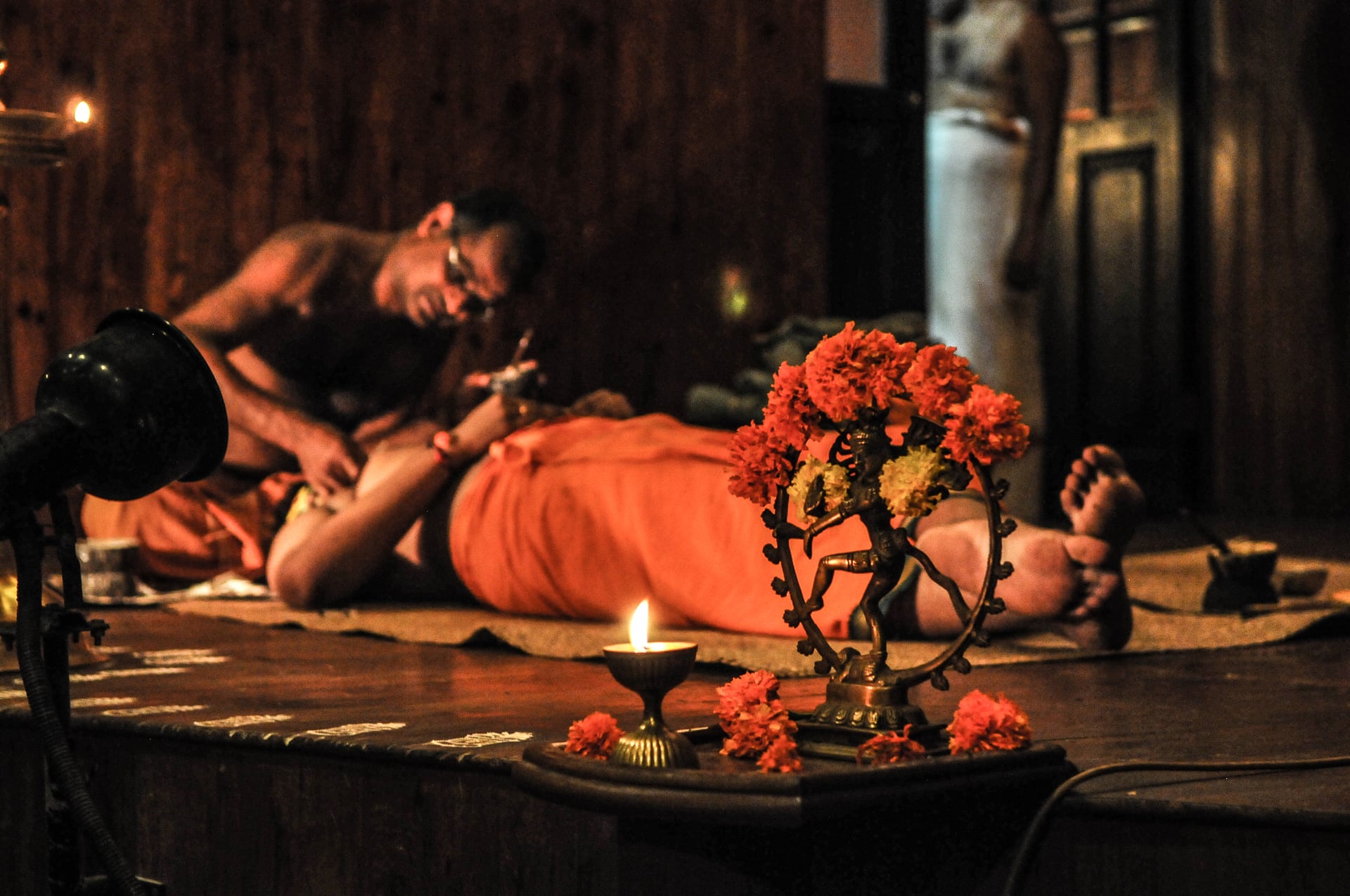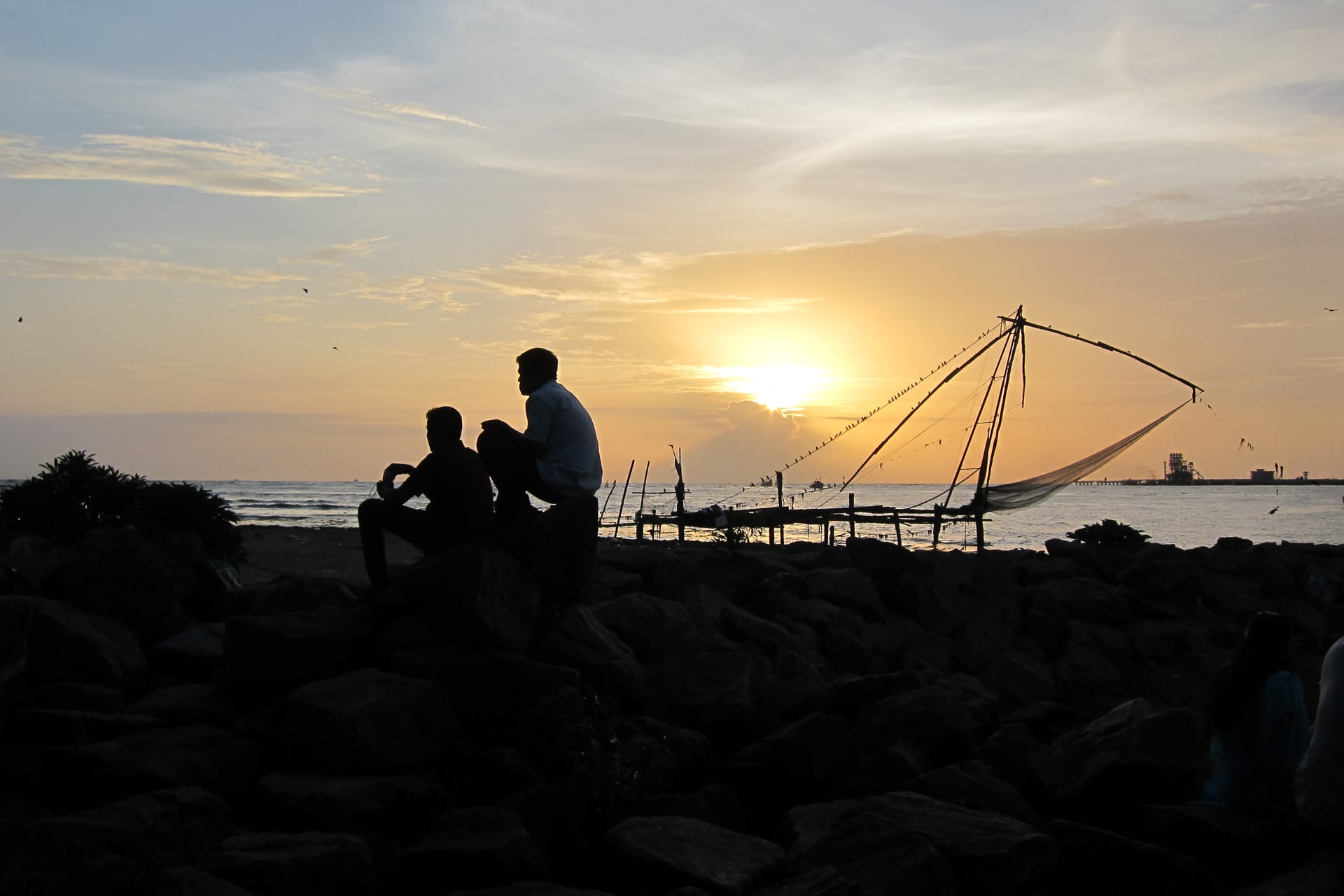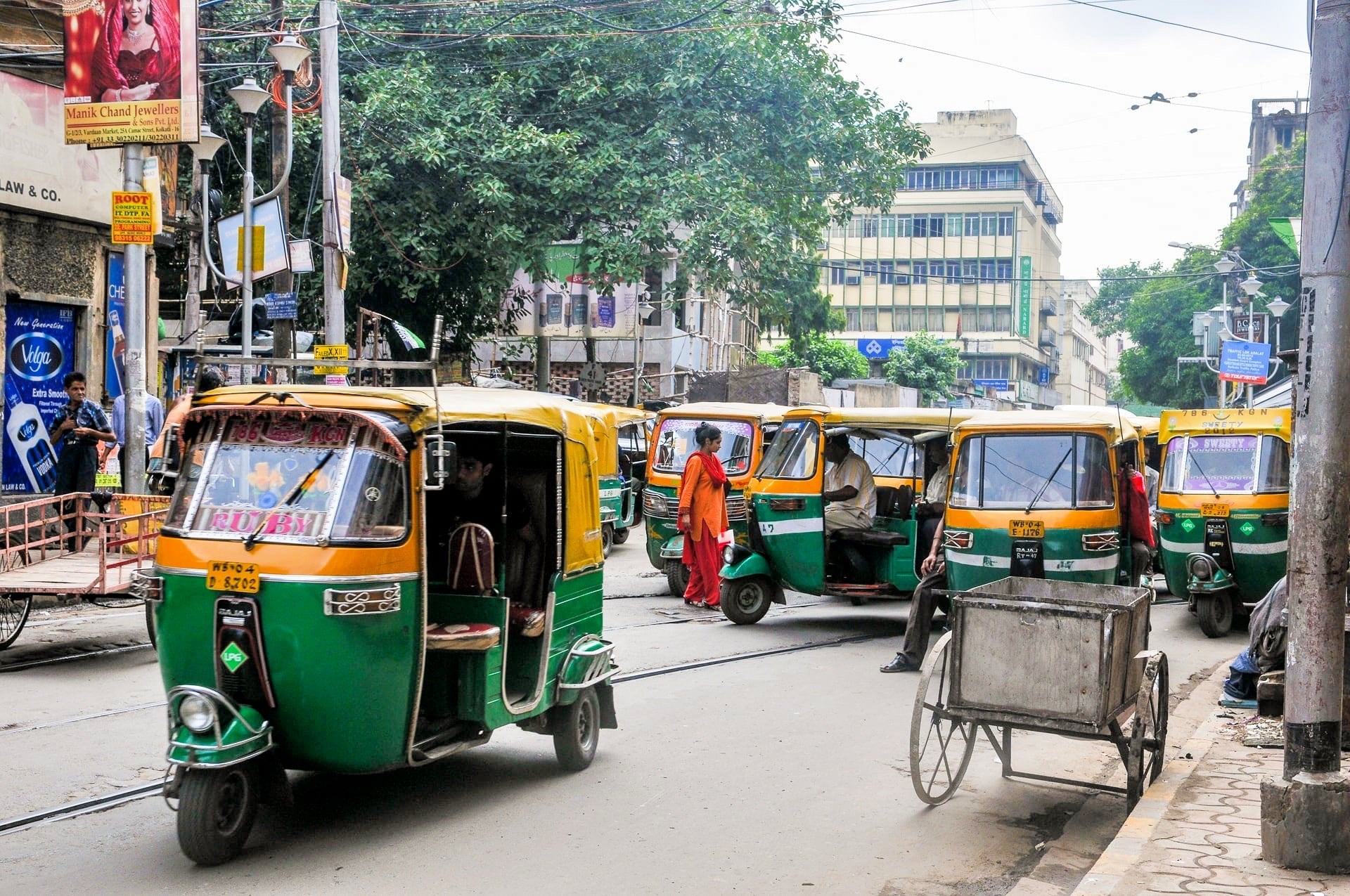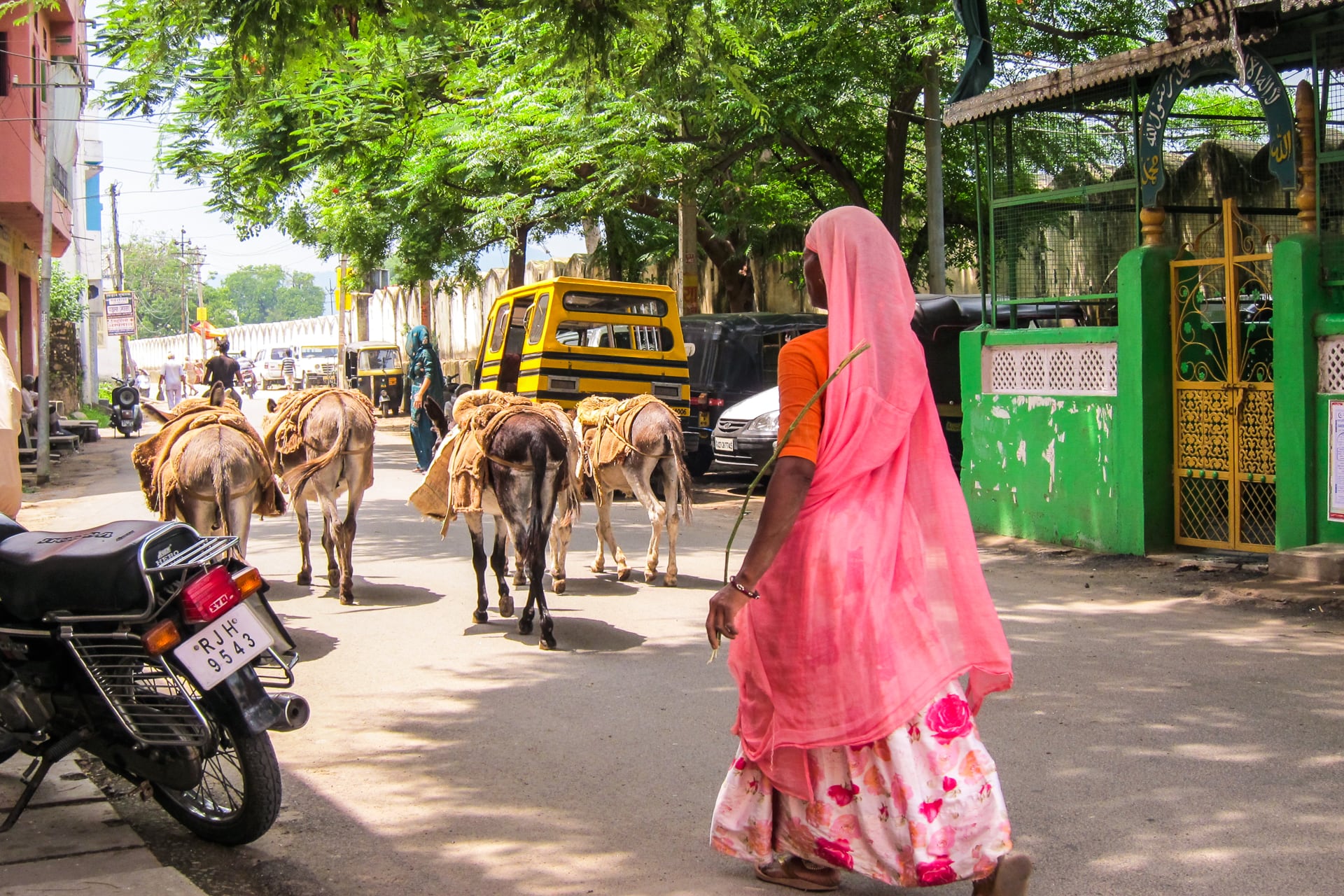Come along for an evening with traditional Kathakali dance theater performers in Fort Kochi, Kerala. Originating in the 17th century in Kerala State, Kathakali combines precise artistic makeup and dress with dancing, live-music, mime and traditional gestures.
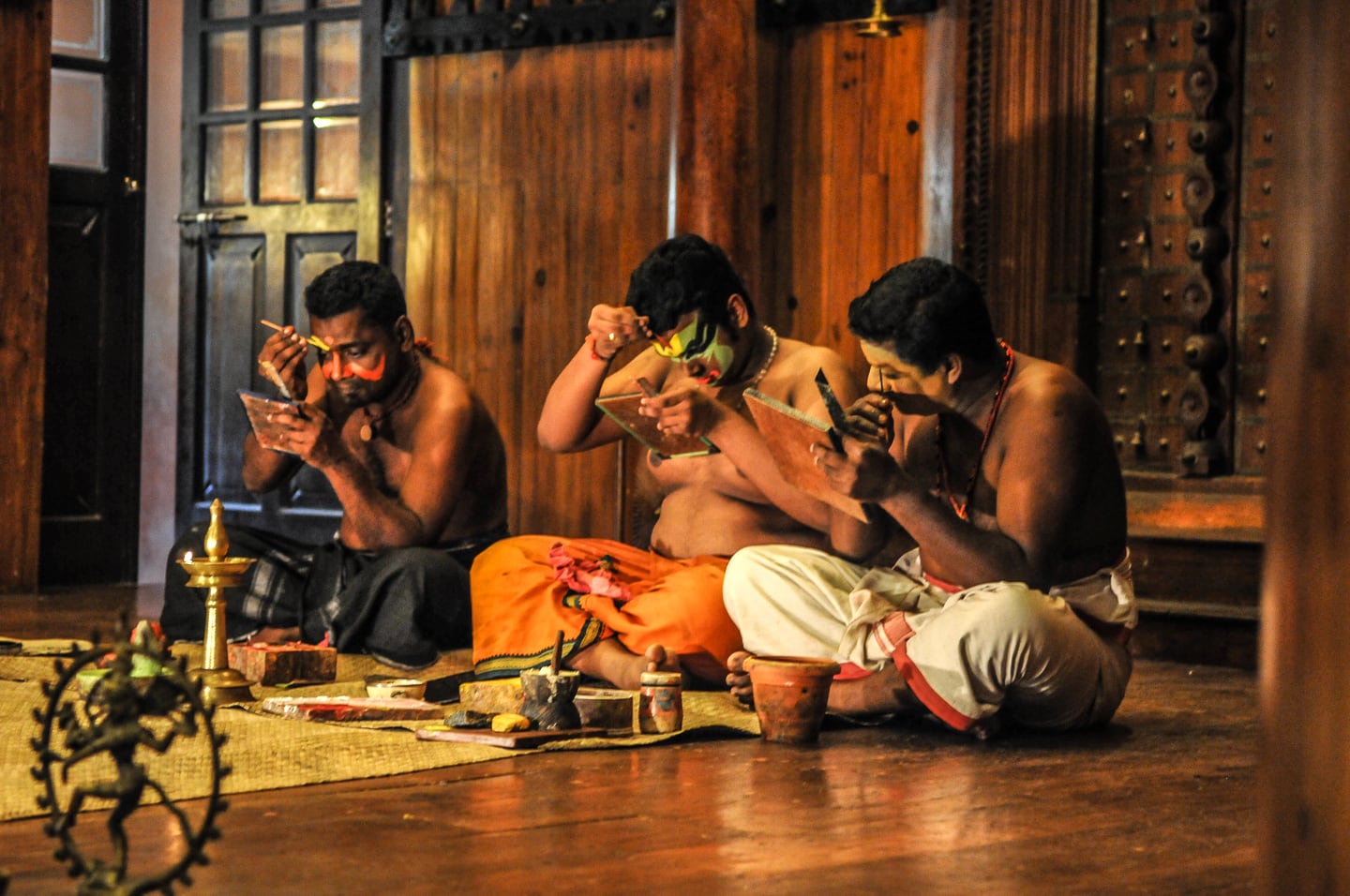
In Fort Kochi’s Kathakali Centre, performers begin applying make-up and costume pieces an hour in advance of the show in front of a live audience.
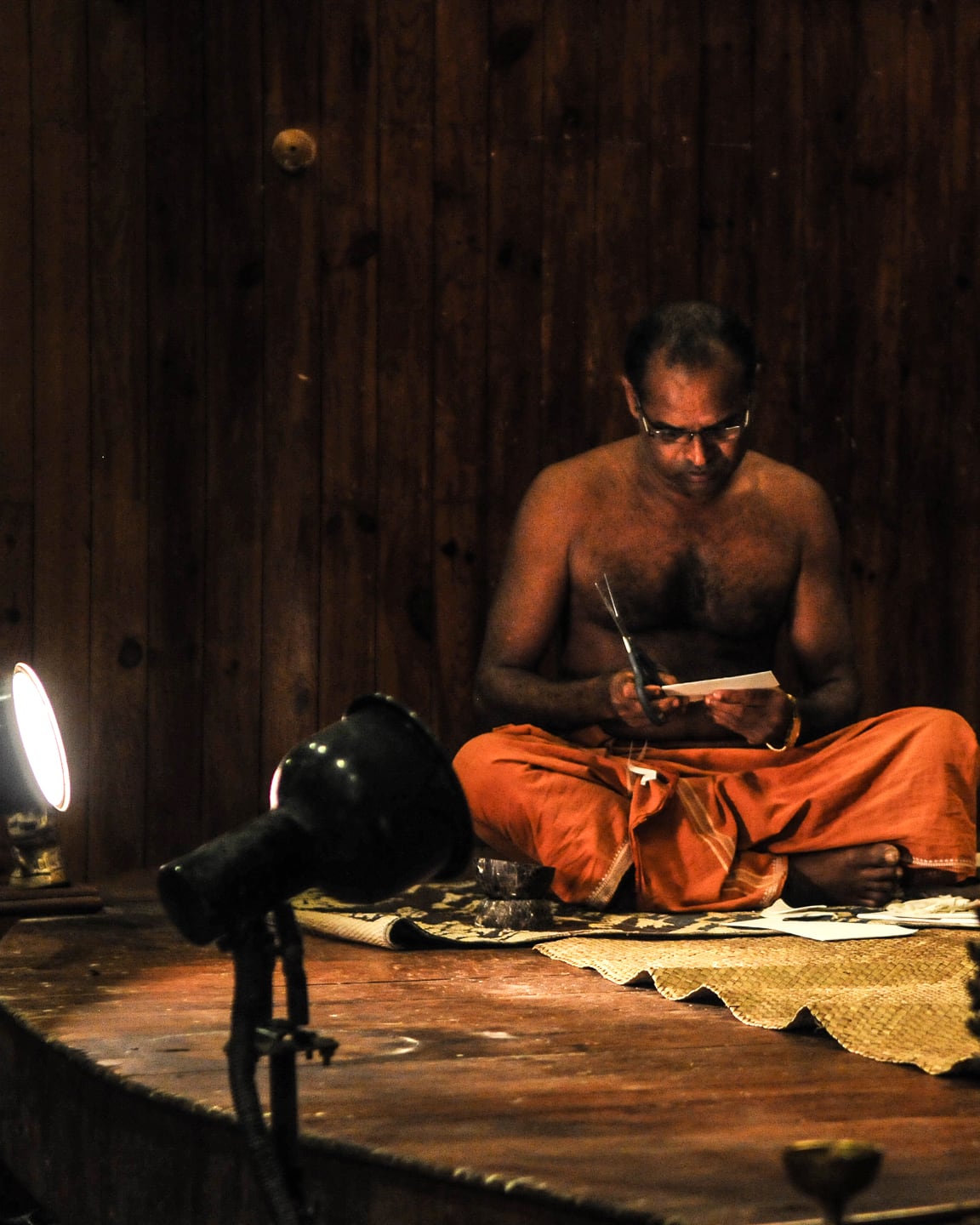
Face make-up incorporates paper pieces, which are cut fresh for every show.
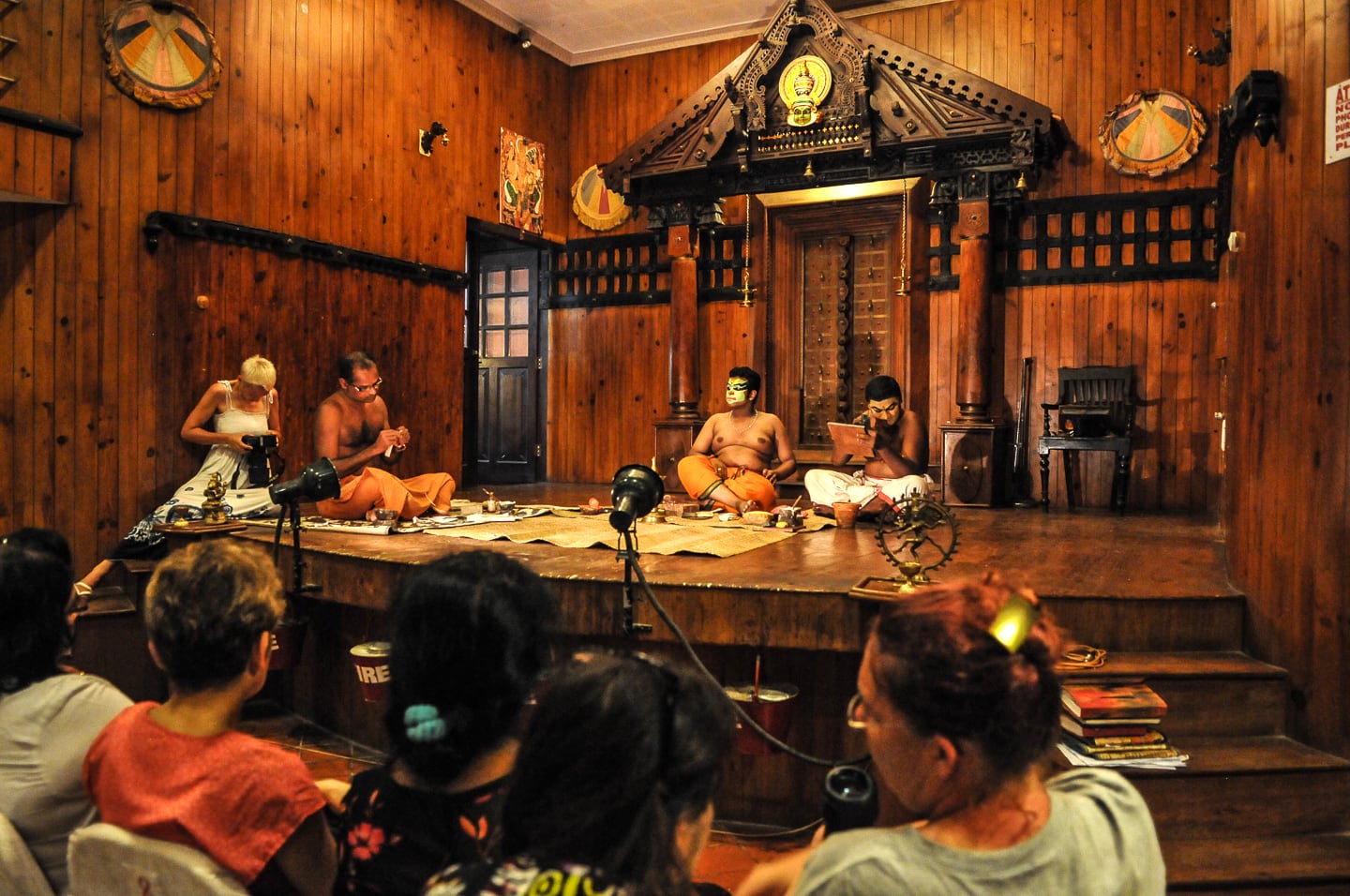
The make-up application is a painstaking and precise process, taking years or decades to master.
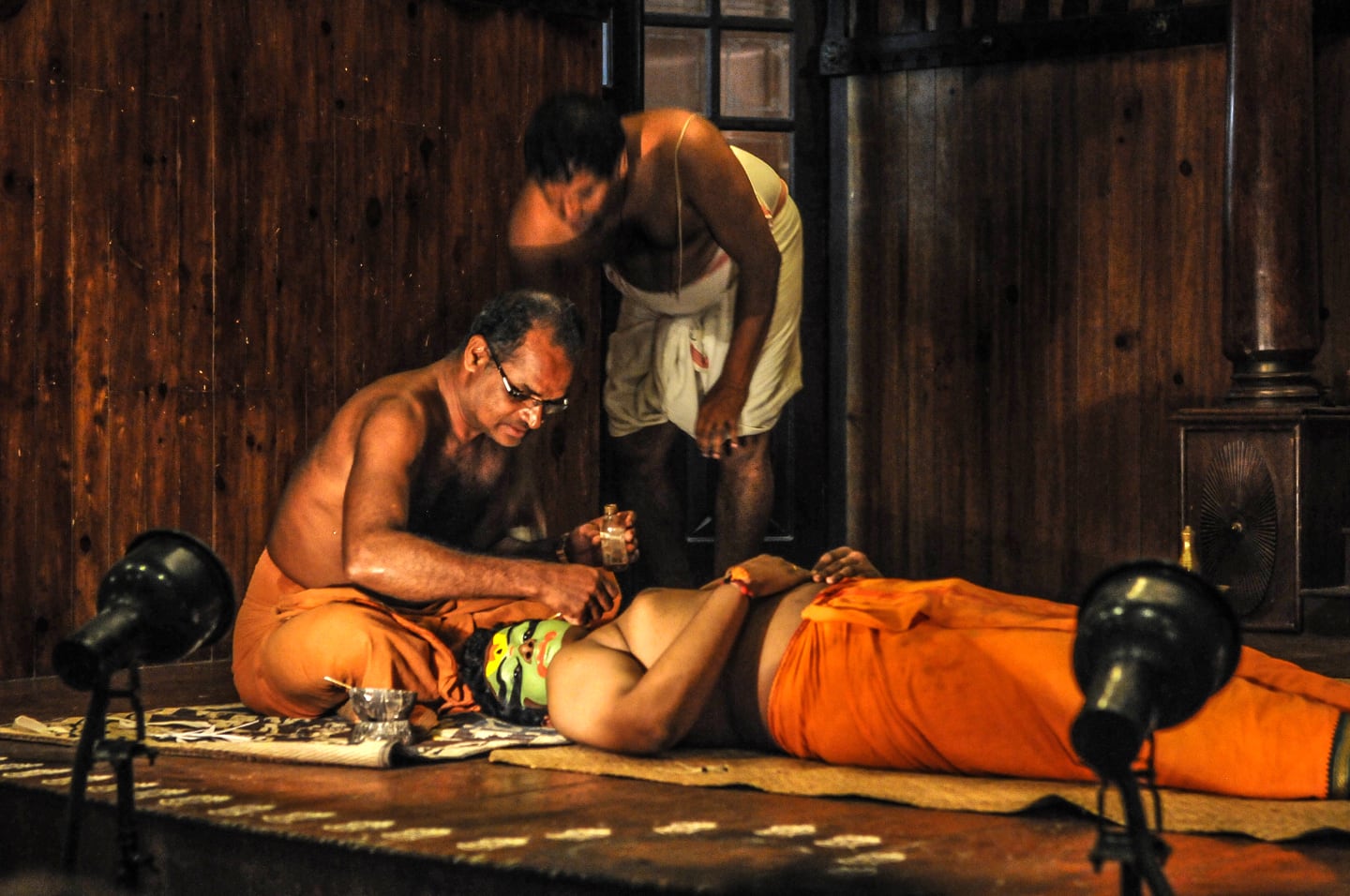
The make-up application is a painstaking and precise process, taking years or decades to master.
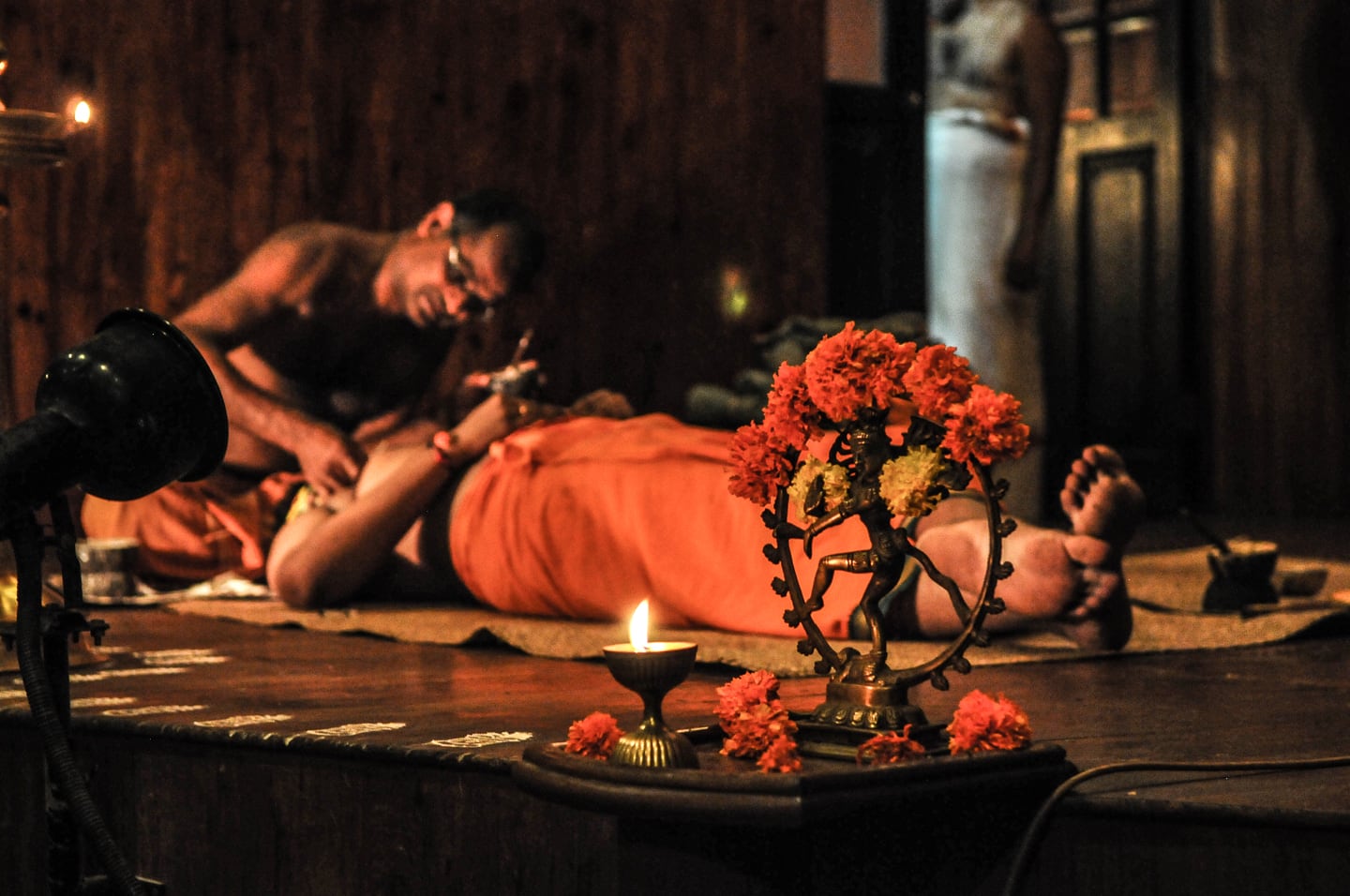
A pure-coconut oil lamp is placed on stage for the performance. Kathakali once was performed by the light of just one lamp.
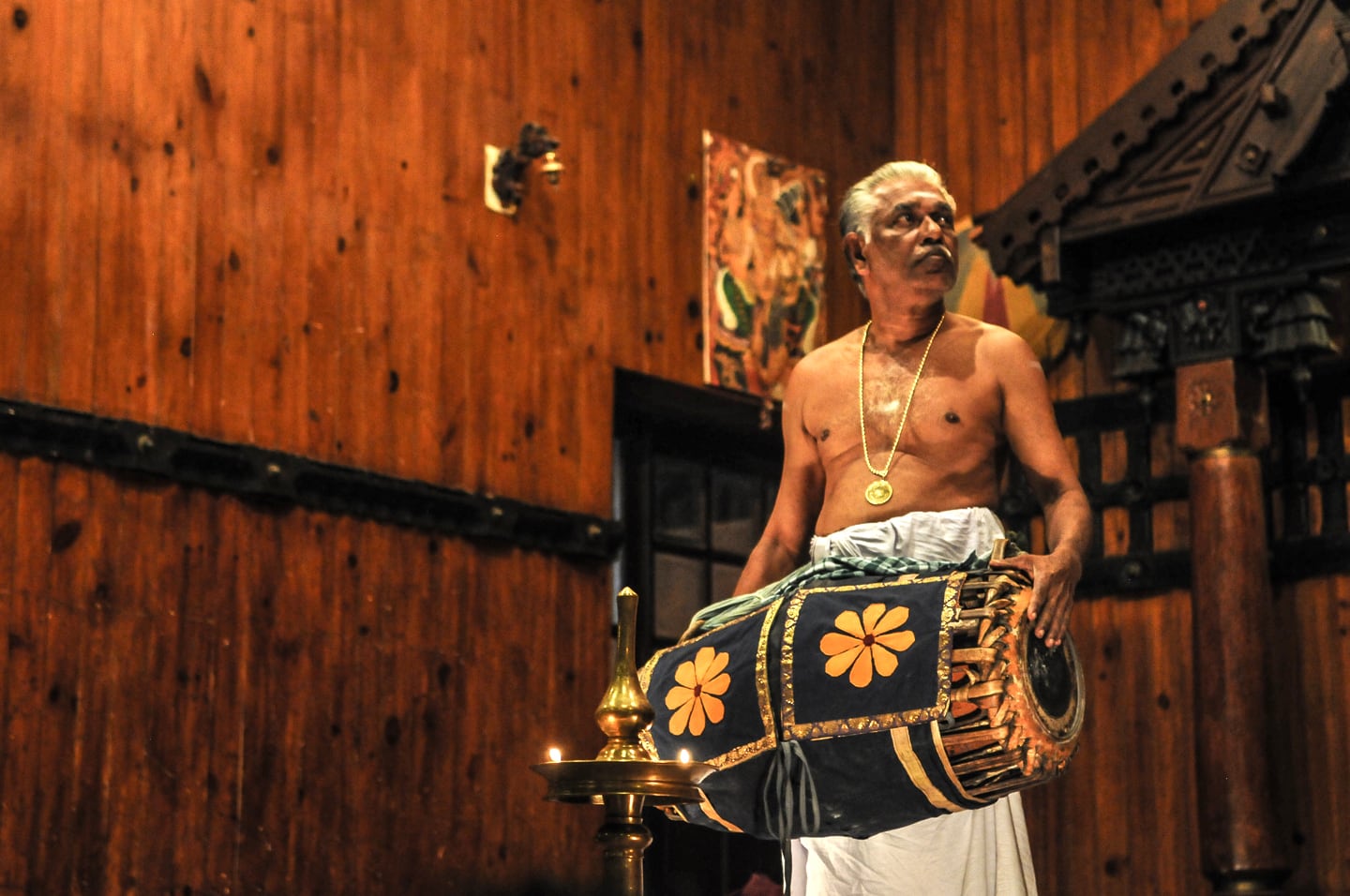
The Kathakali dancing and dramatics are led by precise drumming and soulful melody.
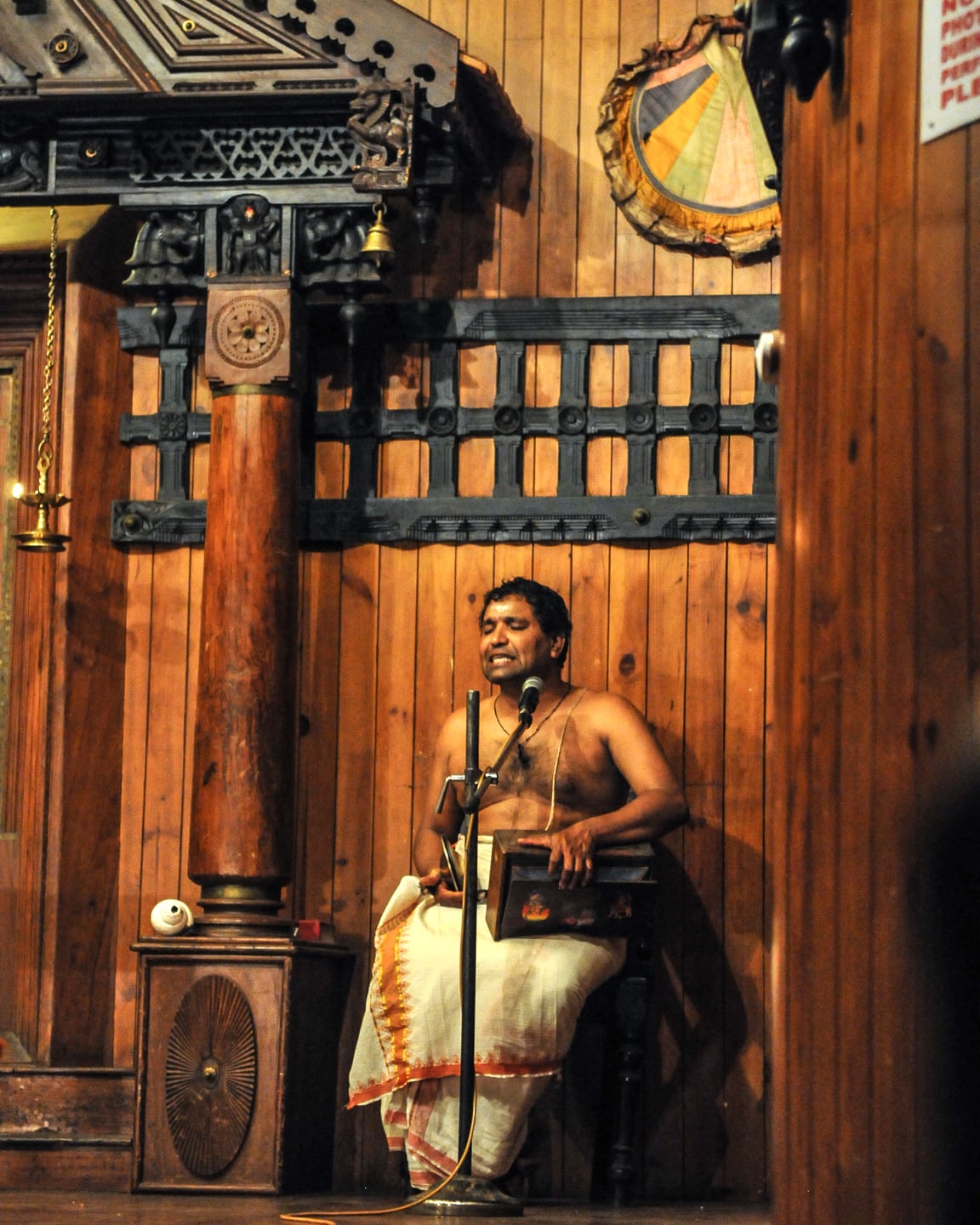
In Fort Kochi, the performance begins with a Kathakali demonstration, geared towards familiarizing foreign audiences with the 24 hand gestures and nine facial expressions that will be used to tell the story to come.
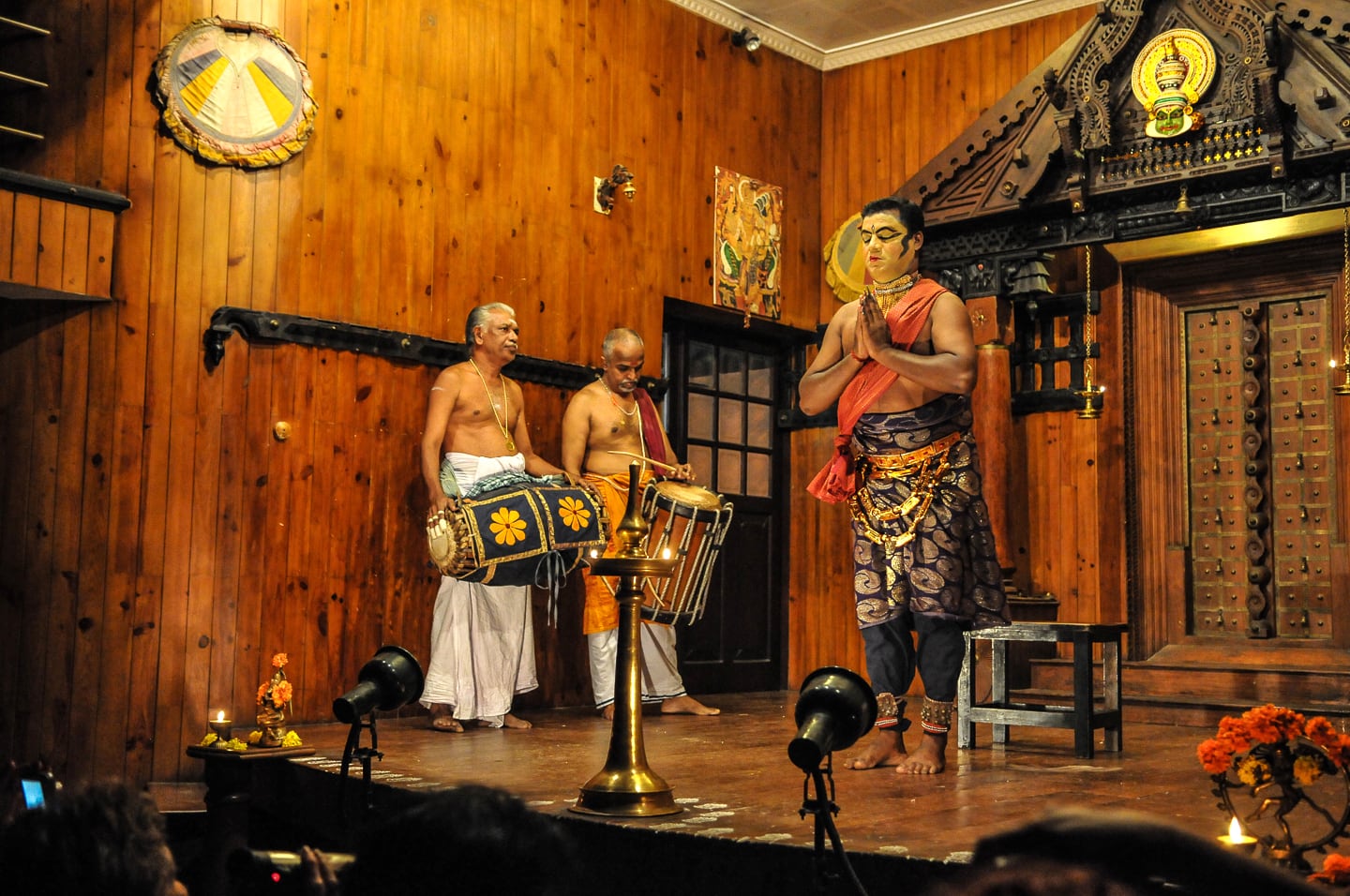
The demo, like the actual performance, is driven by the precise beat of two drums.
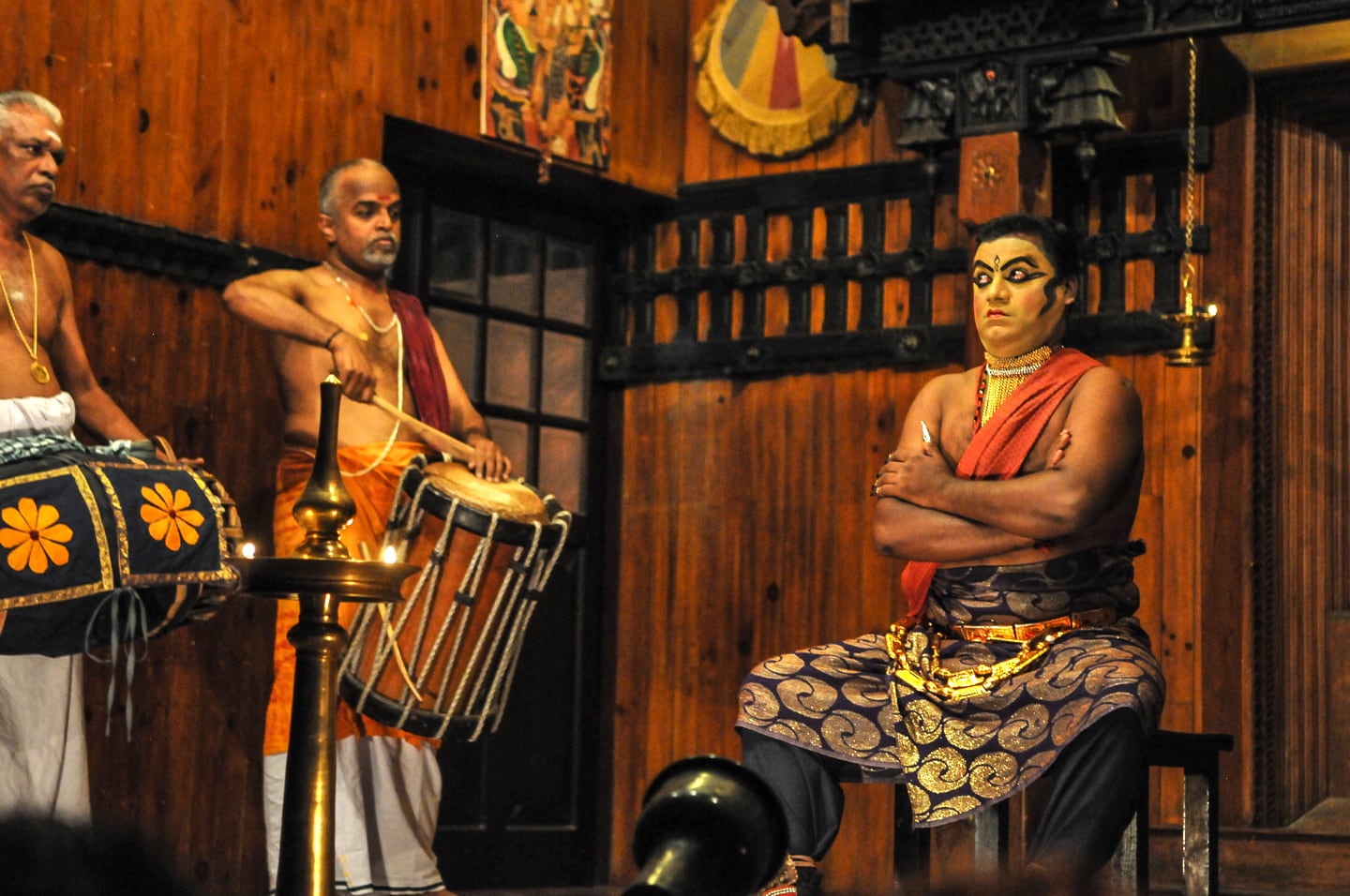
Eye gestures are very important in Kathakali. Performers apply a chundanga seed under each eyelid, which turns their eyes red.

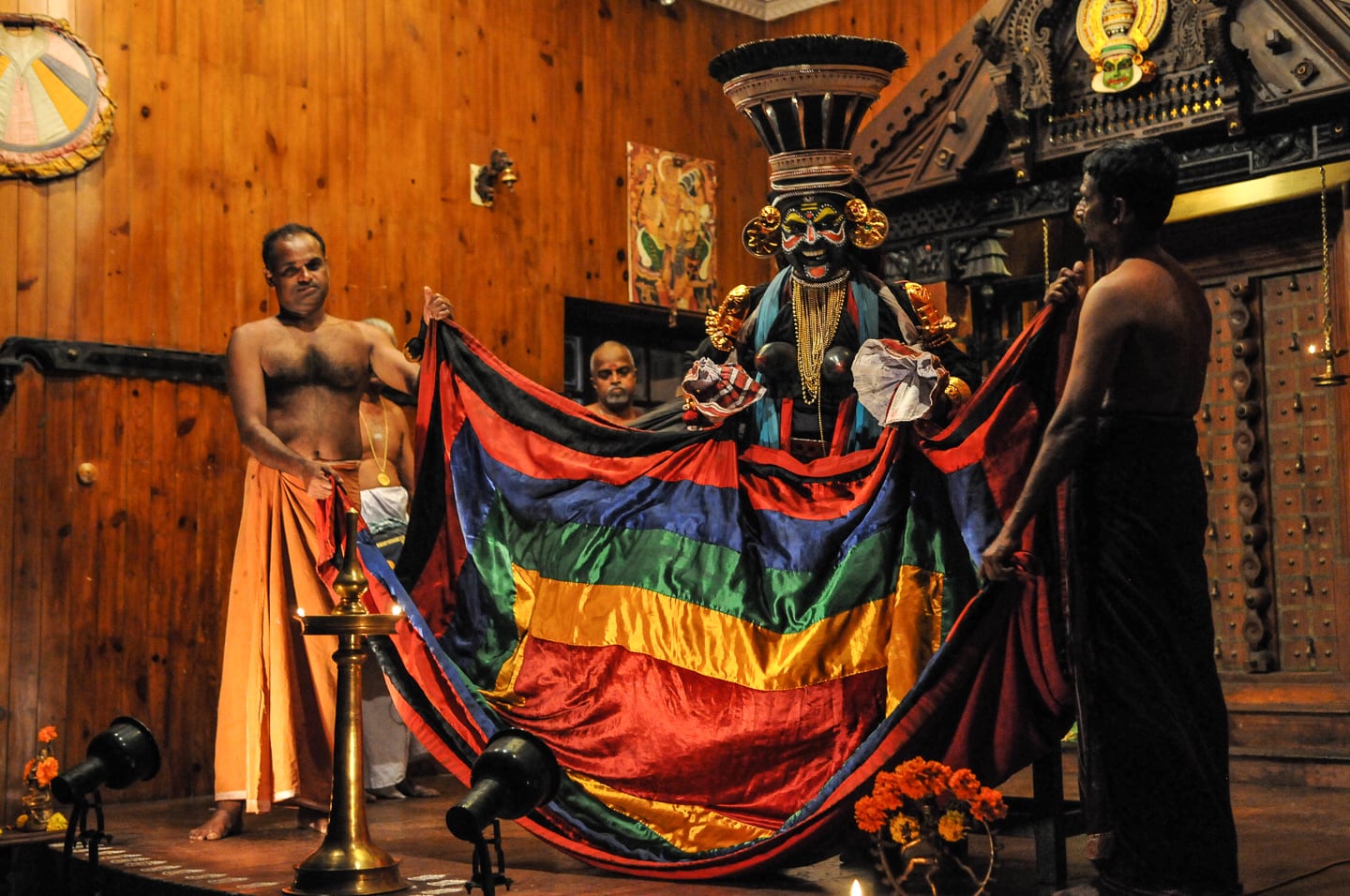
After the audience demo, the main performance begins with the unveiling of the villain, Kathi.
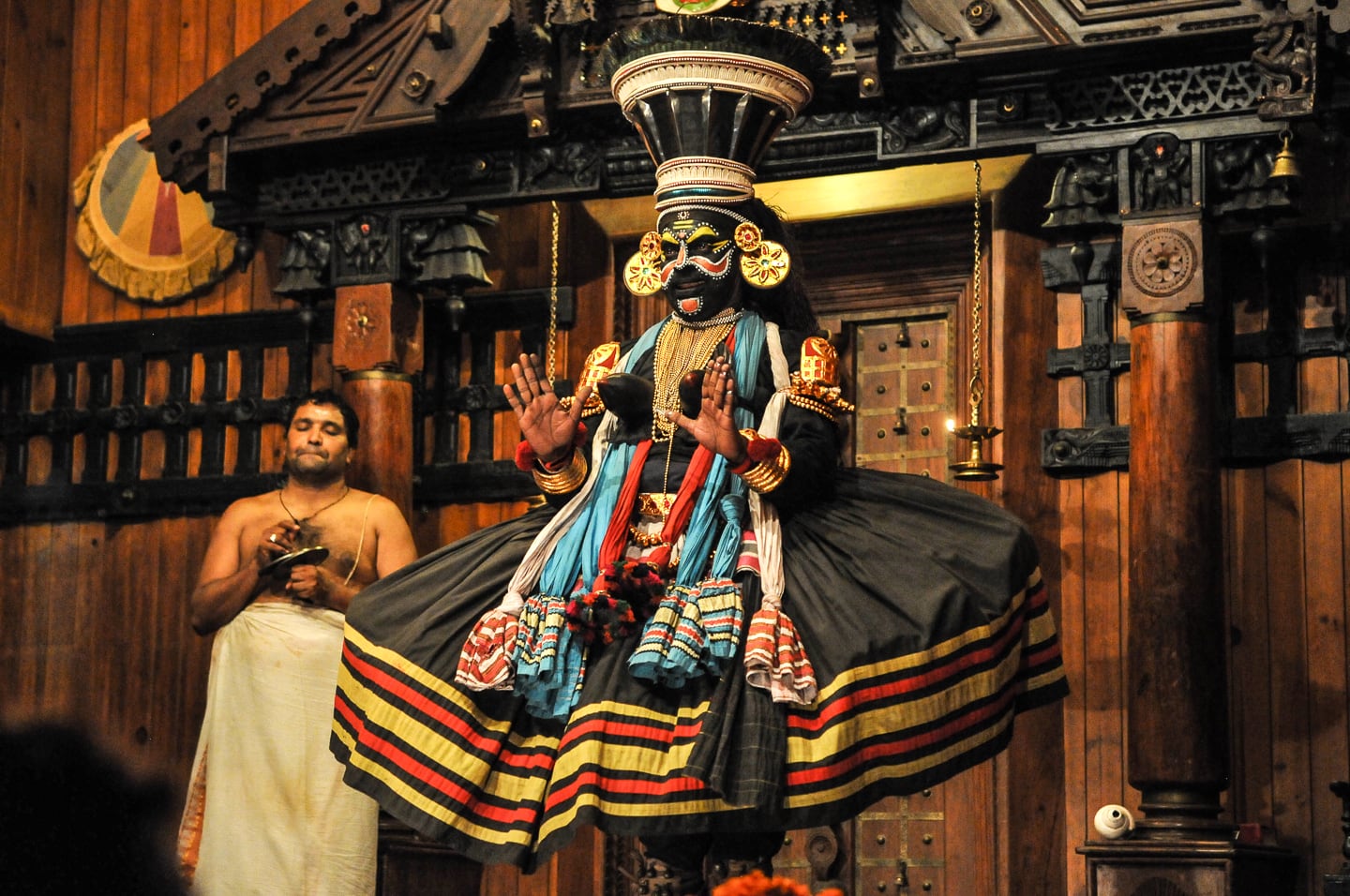
Kathakali, meaning “story-play,” is a stylized classical Indian art form. It utilizes elaborate make-up and dress and detailed gestures and body movements set to music to tell a story.
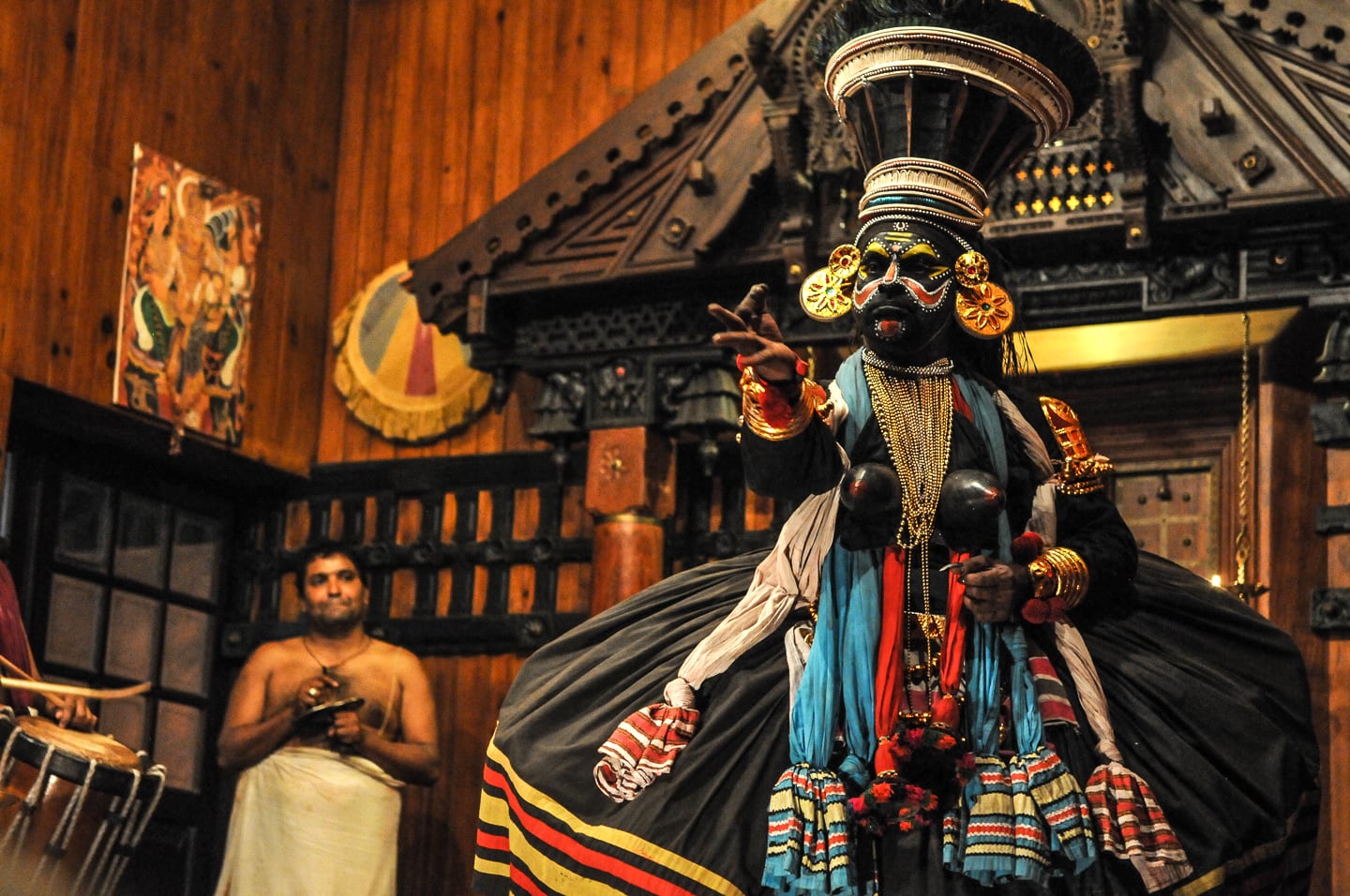
Performers do not speak, but employ “mudras,” which are a form of sign language used to tell a story.
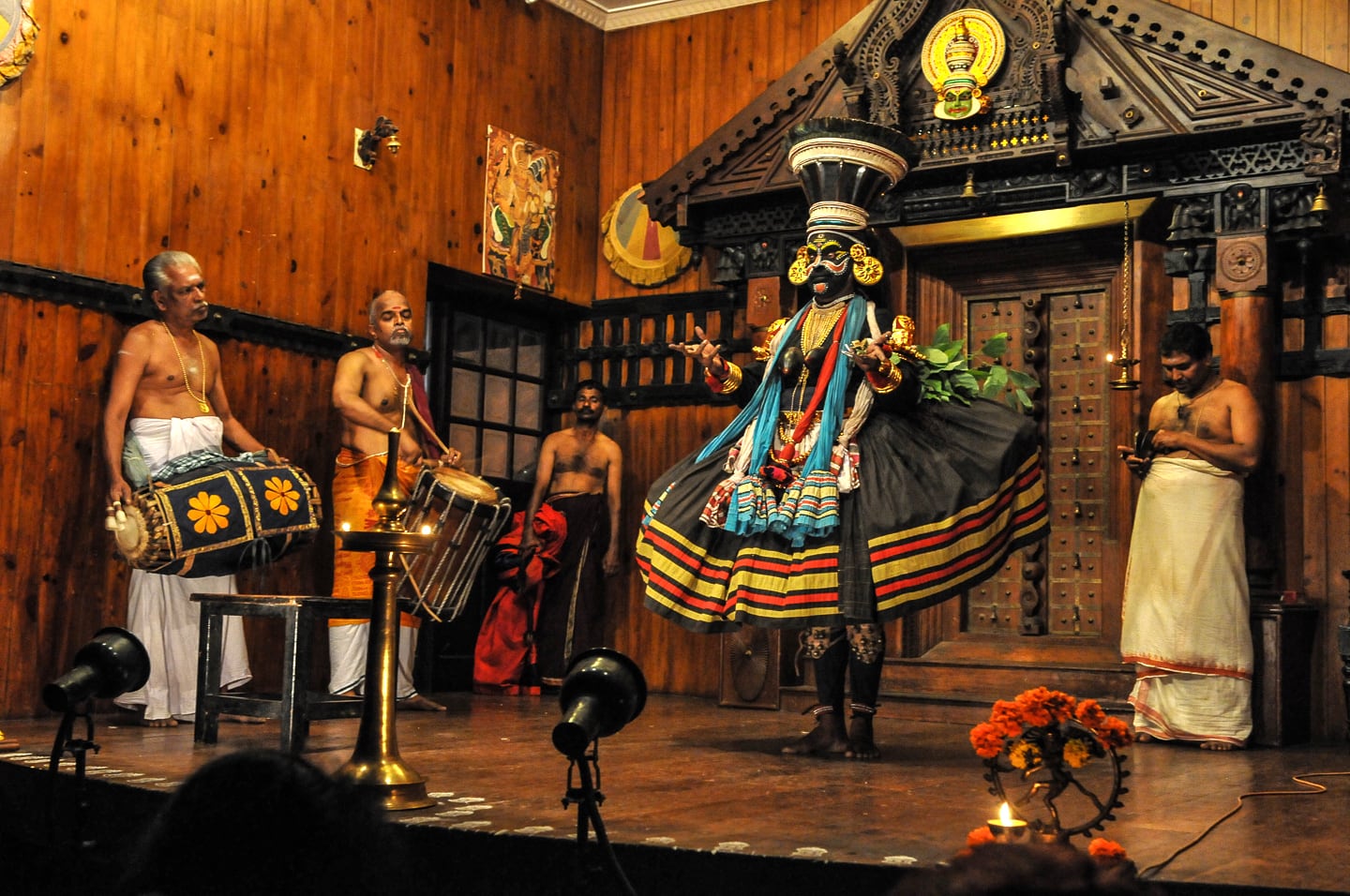
Performers train for 8-10 years perfecting their dance skills. The training is intense and is based on Kalaripayattu, the ancient martial art of Kerala.
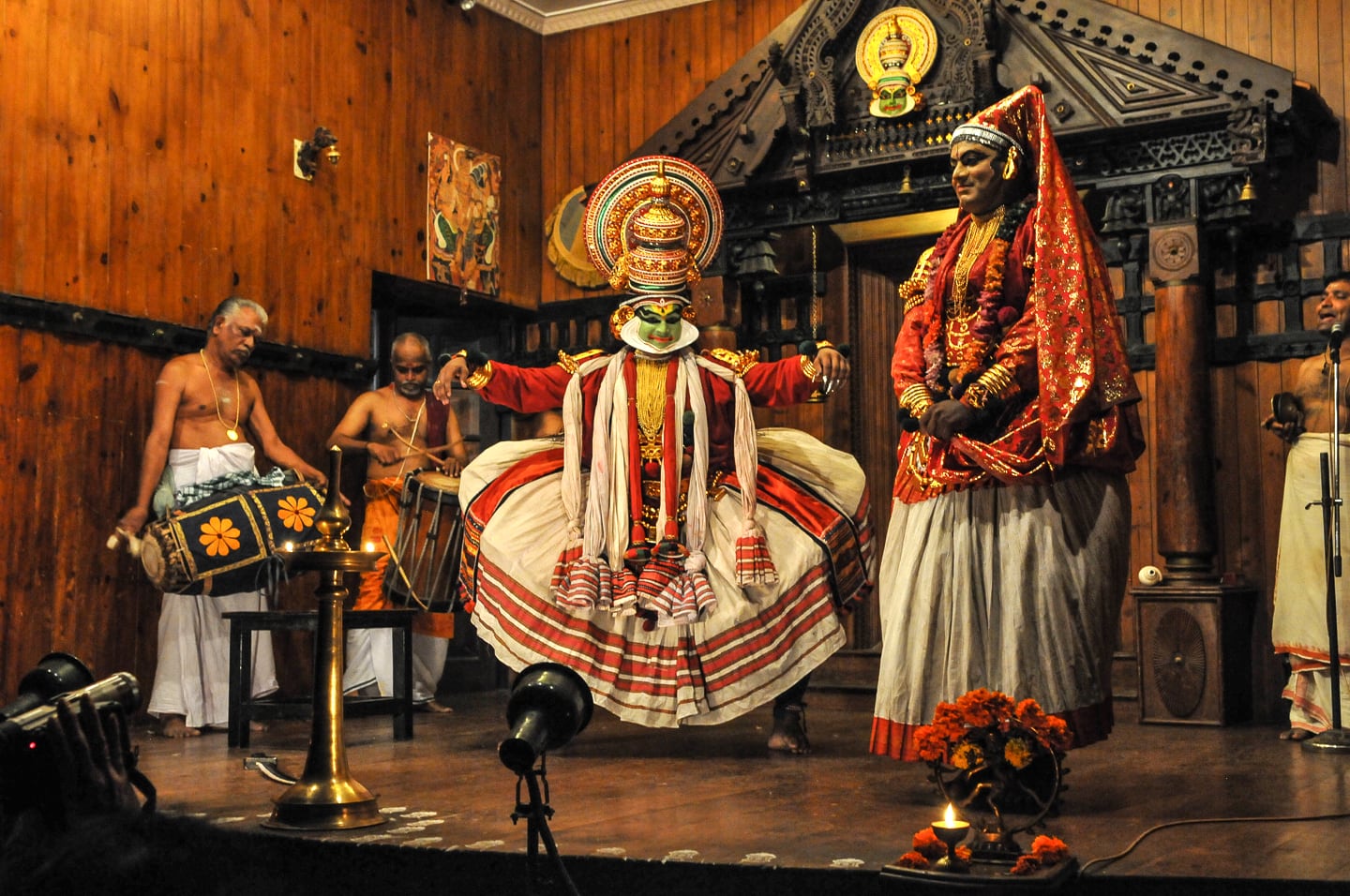
Next, Sathwika, the hero, emerges, along with Minukku, the female. All characters are generally played by males, though the art is gaining attention by female performers.
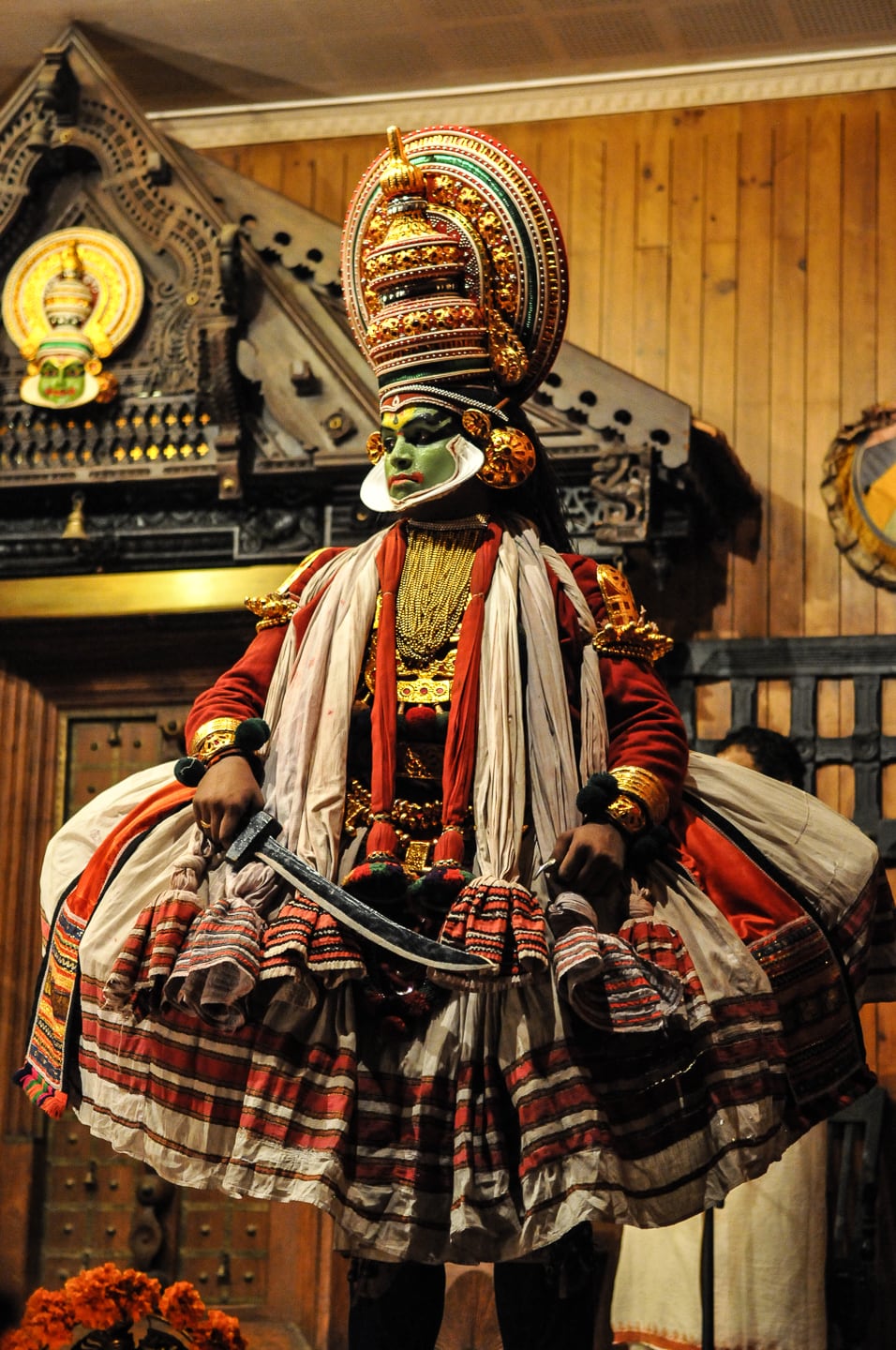
The performance is accompanied by music (geetha) and instruments (vadya). The drums used are chenda, maddalam and edakka.
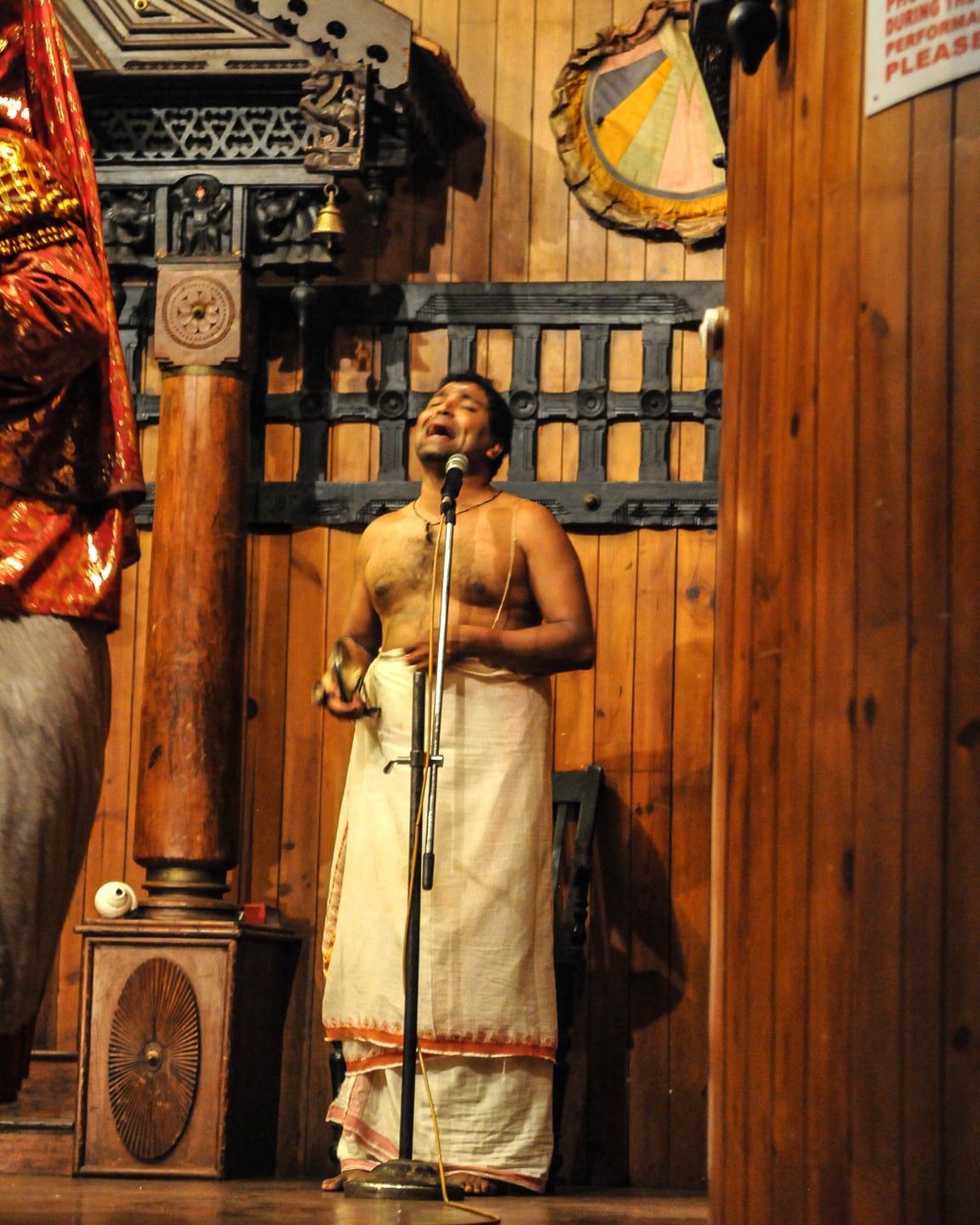
The lead singer is called a “ponnani.” The ponnani often uses a chengila (gong/bell), ilathalam (cymbals), and other instruments.
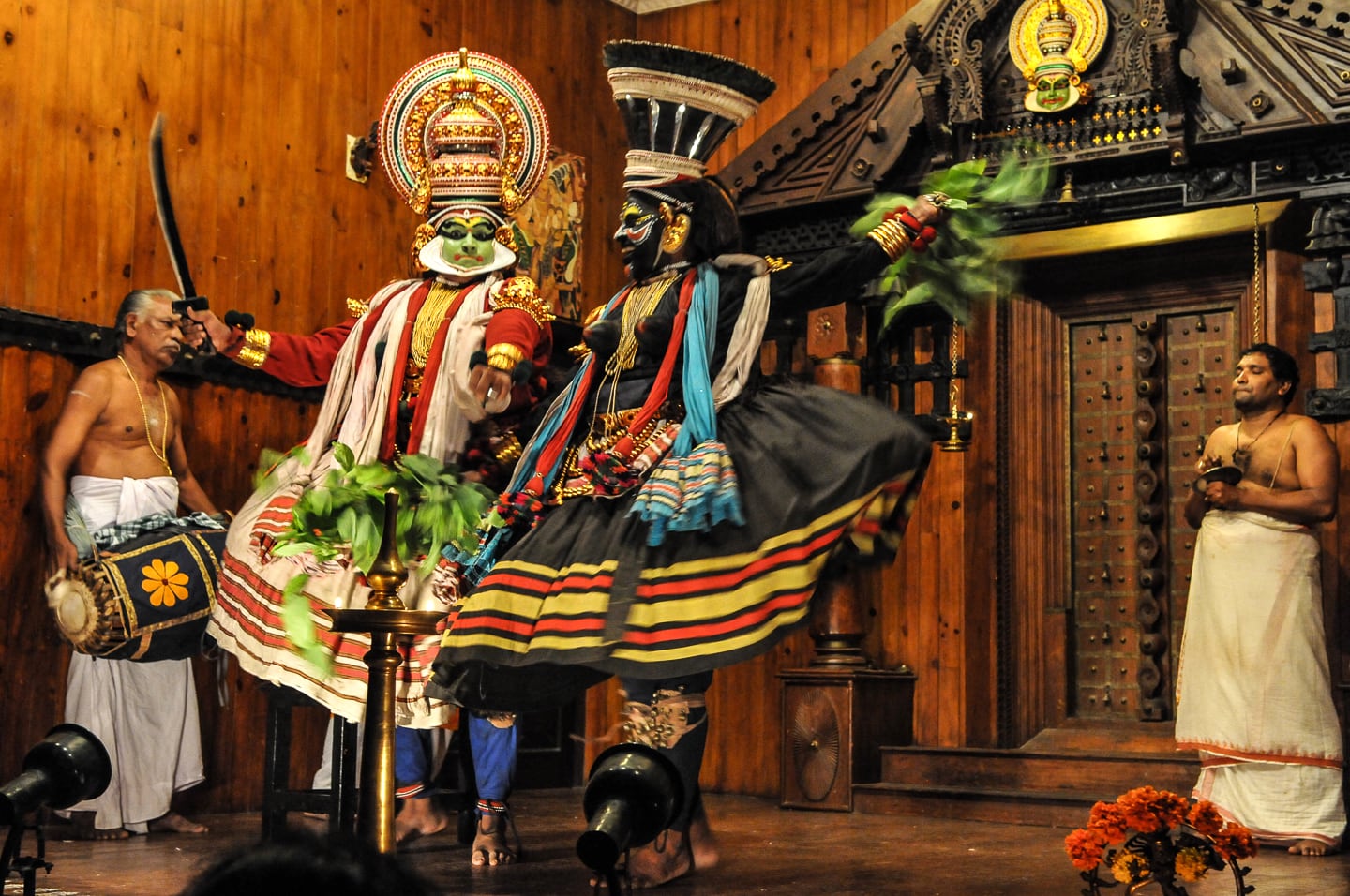
The themes of Kathakali are religious in nature, and are mostly taken from the Mahabharatha and Ramayana epics.
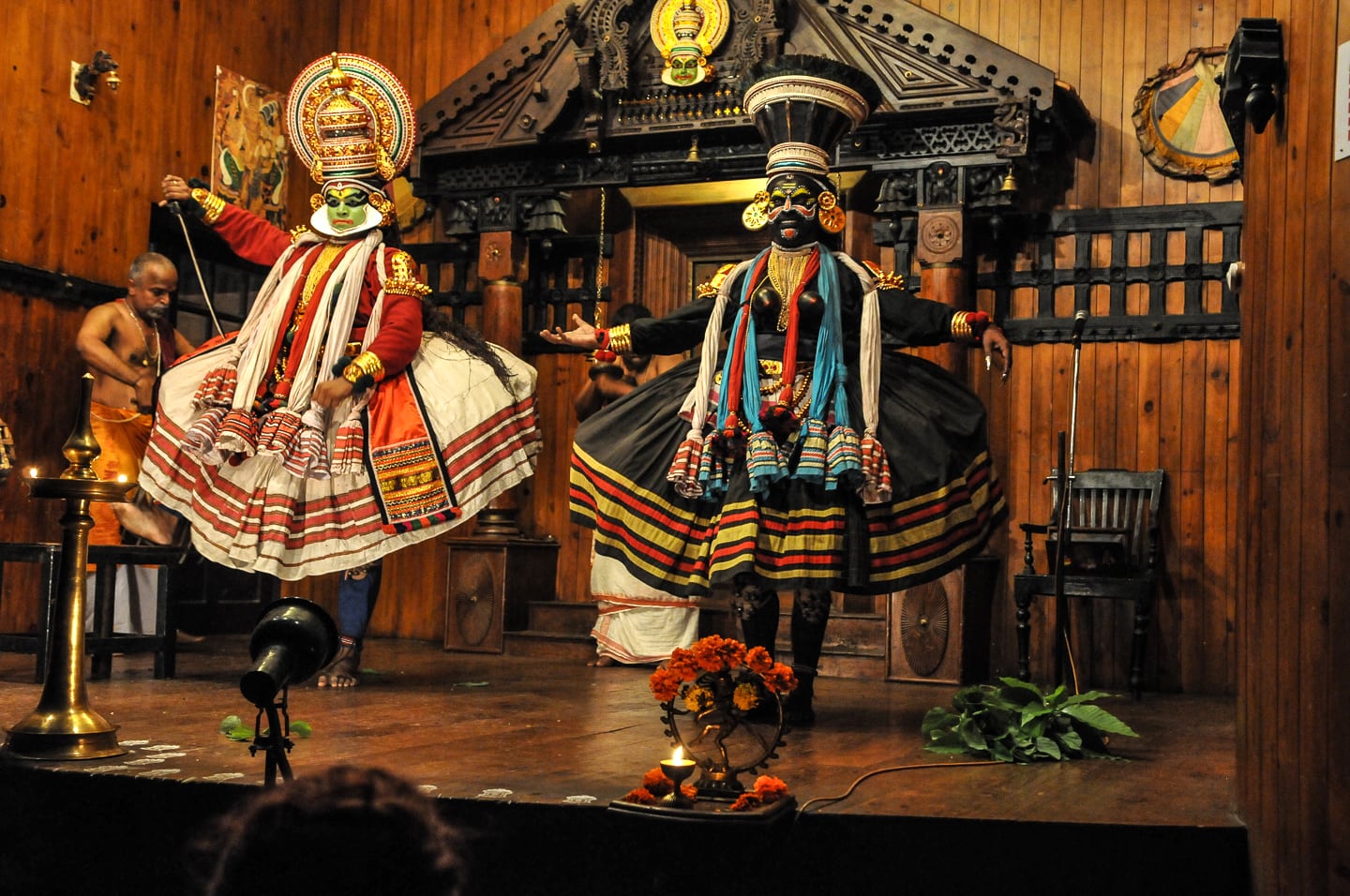
The Kathakali Centre in Fort Kochi is one of the most famous and well-known in the world. To find out more, visit: www.kathakalicentre.com.
